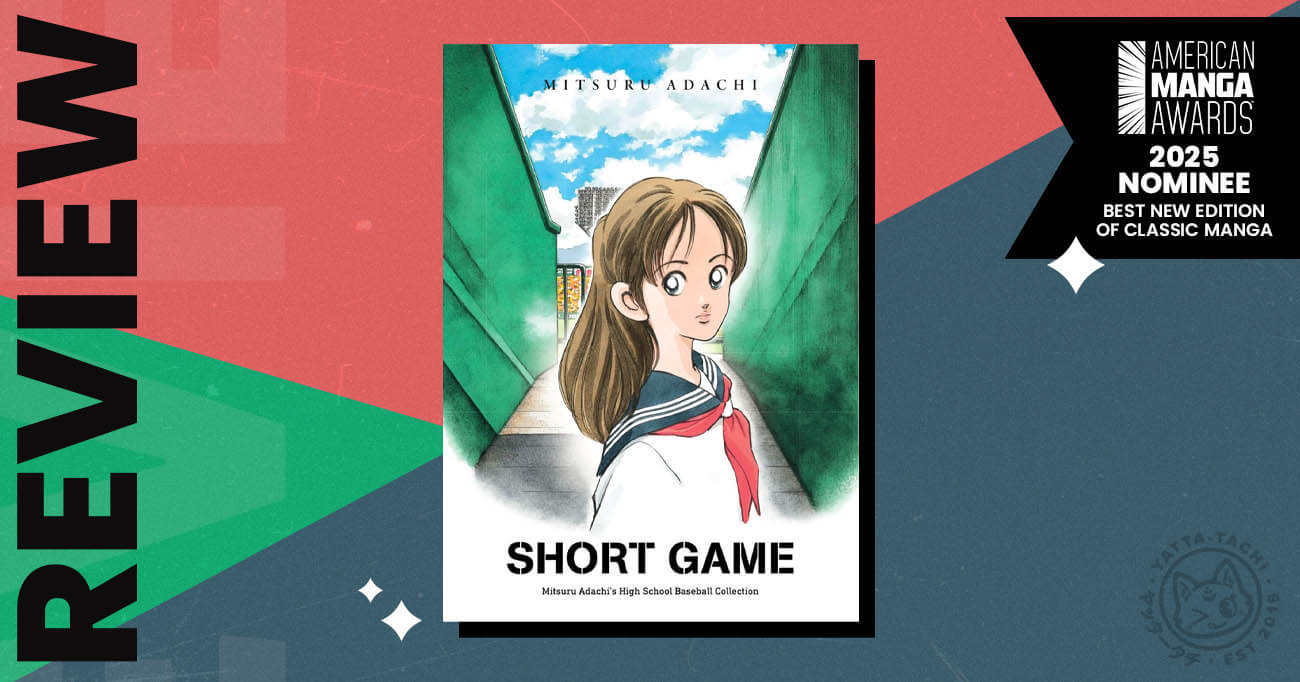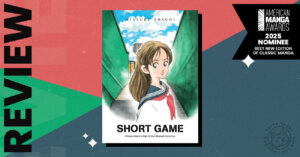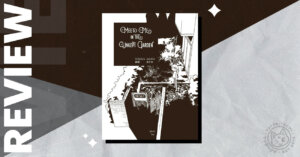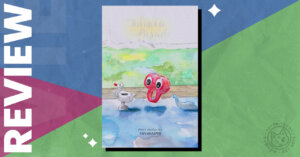Synopsis
Mitsuru Adachi has a formula; there’s always a mischievous teenage boy. A cute teenage girl. The promise of baseball, with the aim of playing the championship at Koshien Stadium. Not to mention a spike of personal tragedy: dead brother, dead sister, doomed romance. Over his long career Adachi has spun this formula into multiple beloved anime and manga series. Most of these run for several volumes or episodes. Which raises the question: what does Adachi’s formula look like in short form, rather than long form?
Many of Adachi’s short comics are available via his Short Program collections, a series that is now four volumes long (including Girl’s Type in 2009.) Viz published the first two of these in the United States. Unfortunately these books are long out of print and go for hundreds of dollars on the used market. None of his short works have been published in English since; until now. Denpa has done a service for all us Adachi fans by publishing Short Game, a collection of short Adachi comics primarily from the 2010s.
The Adachi formula
The Adachi formula is alive and well in Short Game. Many of the characters in these stories look just like the heroes and heroines you remember from his baseball sagas like Cross Game. It’s not so different from Osamu Tezuka, who reused archetypes across his work as a “Star System” of actors.
My worry with Short Game, having never read the Short Program series, was whether Adachi’s strengths as a cartoonist and storyteller could work at small scale. The appeal of his works is his characters whose triumphs and tragedies absorb you for hundreds of pages. Their journey is always more important than the destination, because the destination is usually the same (Koshien.) So how might Adachi change up his approach with just a few dozen pages or less to work with?
Hidden surprises
As it turns out, Adachi is good at short stories too. Part of it is how he tweaks your expectations, which comes from his mastery of formula. Adachi knows what you expect, and so he gives it to you with one hand while hiding a special surprise in the other. He’s also a master of economical storytelling, capturing discrete, memorable moments in his panels like a spider catching flies. Other artists impress with complexity or technique. Adachi’s strength is how much he can pull off with what looks like nothing.
Each story in Short Game puts a spin on an Adachi standard. “Relief” is a sports romance told from the perspective of the benchwarmer rather than the ace. “Team Reunion” follows a former baseball team partying in the shadow of their failed Koshien dream. “Full Count” is a convoluted crime narrative. These are quick and dirty opportunities for the characters to take the stage, crash into each other and then swiftly exit.
Of course, Adachi doesn’t stop with just one twist. Each of these stories goes another step further to defy your expectations. For instance, the protagonist of “Relief” only looks like a benchwarmer. Intimidating yakuza appear in “Full Count,” but are they heroes or villains? Comics like these, which balance comedy, mystery and suspense, take full advantage of Adachi’s skill at constructing jokes on a comics page.
Gag comics
The stories that didn’t leave as much of an impression on me in this collection lacked an easy hook. “Over the Fence” for instance reads like a fully featured classic Adachi baseball story squeezed into a short page count. “Years Come and Go” is similar, except with a greater focus on character drama and romance. Both of these shorts have scenes I like; the former has a wild scene where a parent makes the ultimate sacrifice for his child, while the latter has a very funny ending. But those two stories made me miss the luxurious page real estate of Adachi’s longer manga series.
Seeded throughout the book are short gag comics starring Mitsuru Adachi himself. Fans will remember that Adachi loves drawing himself into his books, often as a self-deprecating joke. The gag comics in Short Game have that same energy to them. We see Adachi trolling his assistants, parodying his most popular series Touch, and resorting to “power outage manga” to avoid drawing pages. It’s charming, but I can’t help but think these strips will come off as inside baseball to anybody other than dyed-in-the-wool Adachi fans.
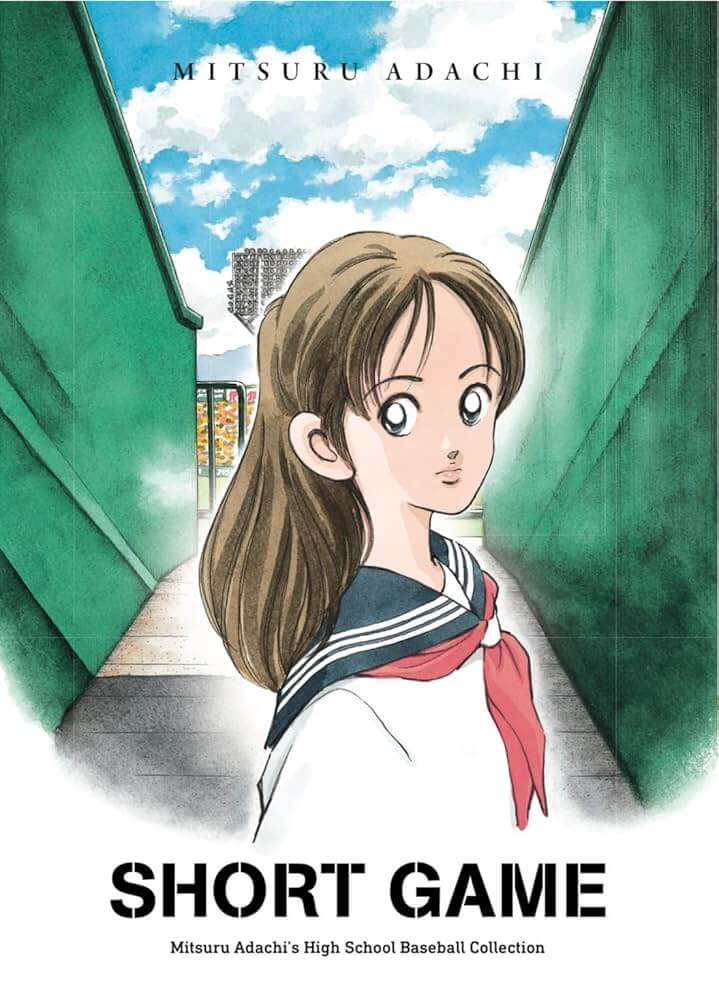
The Verdict
Short Game may be Adachi’s grand return to English language publication, but it’s really just another book of his. A good chunk is clearly intended for Adachi completionists, which may limit its appeal among those not yet converted. I’d recommend Cross Game to those readers as a starting point instead.
Then again, Adachi is one of the greatest and most efficient manga cartoonists, and he’s been perfecting his craft for decades now. As if to underline that point, the collection ends with “Four-Page Future,” a short comic imagining an older Adachi. The window outside his apartment might show futuristic buildings and flying cars, but Adachi’s doing the same thing he’s always done: drawing manga on a deadline. A commemorative plaque reads “Traditional Showa Era Hand-Drawn Manga.” Dry humor that might be, Adachi without a doubt deserves the honor of that label. He’s a national treasure.
Short Game is available to buy at Bookshop, Amazon and Barnes and Noble.
If you liked Short Game, you might also like:
- Cross Game
- Maison Ikkoku
- Blue Box
Credits
Writer and Artist: Mitsuru Adachi
Translator: Matt Schley
Proofreading: Momo
Production: Glen Isip and Nicole Dochych
Digital: Taneli Vatanen
Published in English by Denpa, LLC.
A special thanks to Denpa for providing us with an advance review copy. Receiving early access to this manga has in no way altered the opinions expressed in this article.
Article edited by: Kelly Stewart

Featured Sponsor - JAST
The sweetest romance and the darkest corruption, the biggest titles and the indie darlings; for visual novels and eroge, there's nowhere better.
Big thank you to our supporters
From their continous support, we are able to pay our team for their time and hard work on the site.
We have a Thank-You page dedicated to those who help us continue the work that we’ve been doing.
See our thank you page